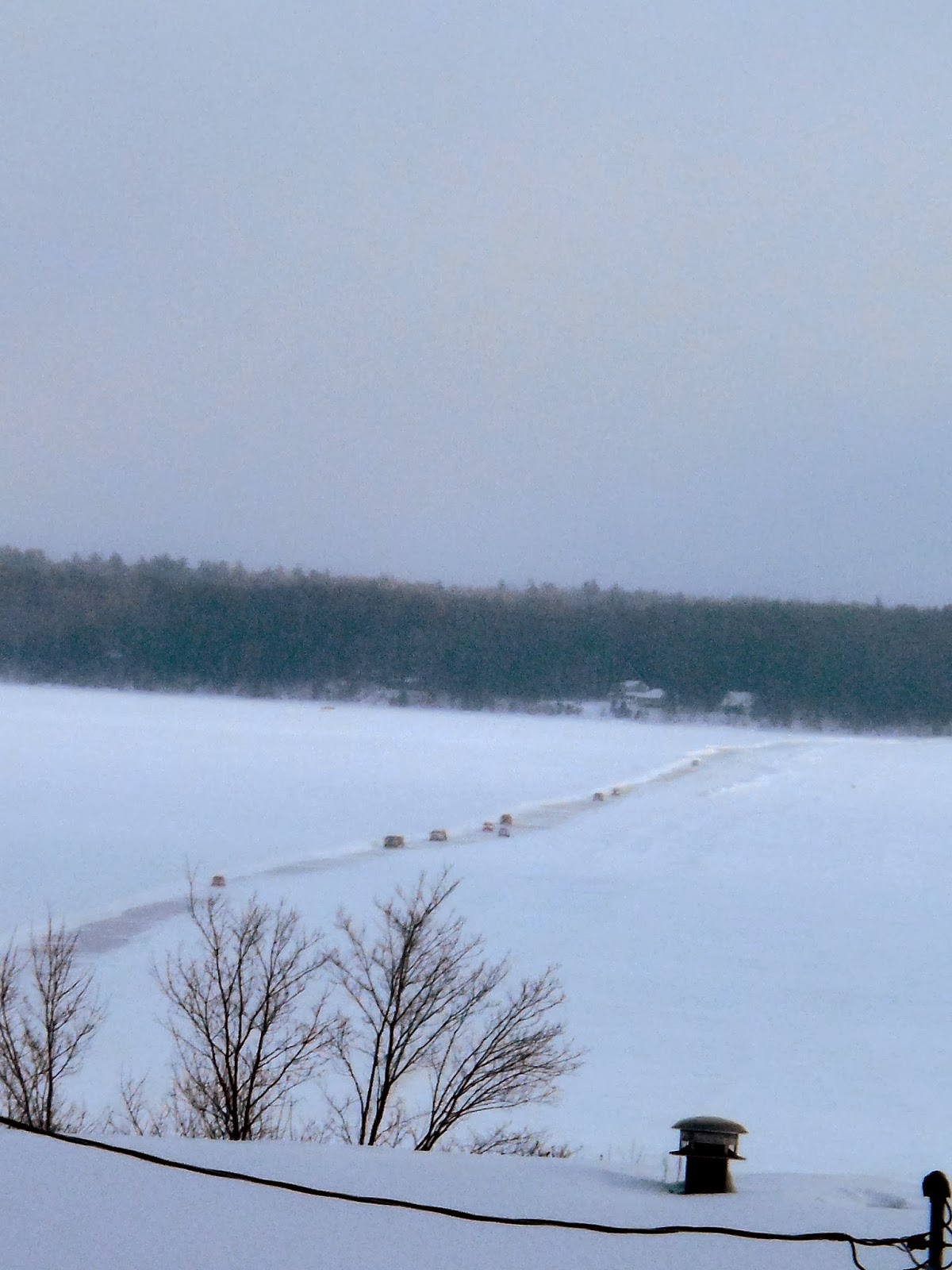 |
| FARM WELL PUMP; FROZEN IN TIME |
 |
| ALL GONE WITH THE WINDS OF TIME |
Monday, 8:00 AM. -6 degrees, wind SSW, light. The sky is lightly overcast but clearing, with some light fog over the channel. There are some high, fish scale clouds but I think it will be a nice day for our trip to Duluth. The humidity is 79% and the barometer is way up, at 30.47".
Seen from the road a hundred yards away the upright object standing in the open field might be momentarily mistaken for a human figure, perhaps a smallish man, or a boy. But it stands still, far more still than a living thing, even a deer, can stand. It stands within a circle of weeds and grasses that have been left by the mower, which has gone around it.
Straining to see the object in the shadows of the setting sun, focusing and refocusing one's eyes, it becomes a familiar object of memory...a cast iron farm pump, replete with handle. Iron wheels emerge from the snow on each side of it, wheels to which a shaft was once attached to harness the power of a windmill.
But it makes no sense; this piece of long ago technology is standing alone in an empty field. Where is the house with the laughing children and their loving mother? Where is the barn, with the horse, and a cow and heifer? Where is the chicken coop with the laying hens and the rooster to greet tomorrow's dawn?
They are all gone to dust, and to distant, dusty memories, the few that may remain within an old, old man or woman, perhaps a grandchild of the farmer who bought the pump from Sears or Montgomery Ward. But the cast iron pump endures.
Amazingly, no one has taken it for scrap iron over the years, or cannibalized its parts. Perhaps its nuts and bolts, frozen tight with rust, have rendered it too difficult to dismantle. How deep were the pipes driven into the sandy soil to reach the water table? Knowing the fall of the nearby river, I would guess something over one hundred feet.
" This is an old fashioned winter," we are all saying, even if we don't really know what that means. But if the winter a century ago was like our present winter, it was brutal. The snow piled along the paths between the house, the barn, the pump and the outhouse must have been higher than the heads of the children which ran down them. It must have been a cold walk to the school house, and a frigid wagon ride or walk to town.
If the wood pile had not begun the winter almost as high and as long as the house there would have been little left by now. And it must have been a constant worry that the pump, not draining properly in the bitter cold of night, would freeze up and it would be almost impossible to thaw out and draw water for the animals.
A century ago the Great War was raging across Europe, and the farmer and his wife were glad that they were here, and their children were here, and they were not in the midst of all the madness. And it was no colder here than the far off place they had left, and there would be no soldiers coming on the morrow to take away the cow and the horse for the army.
And there were potatoes and apples and carrots and cabbages and salted pork enough to last until spring, and enough milk each day for the children. And the kitchen with its cast iron cook stove was warm, even if the water froze solid in the bedroom wash basin over night.
And the new pump was a marvelous thing.





























































